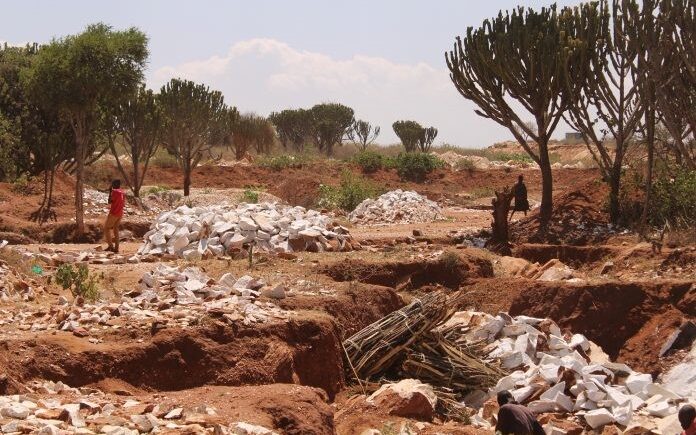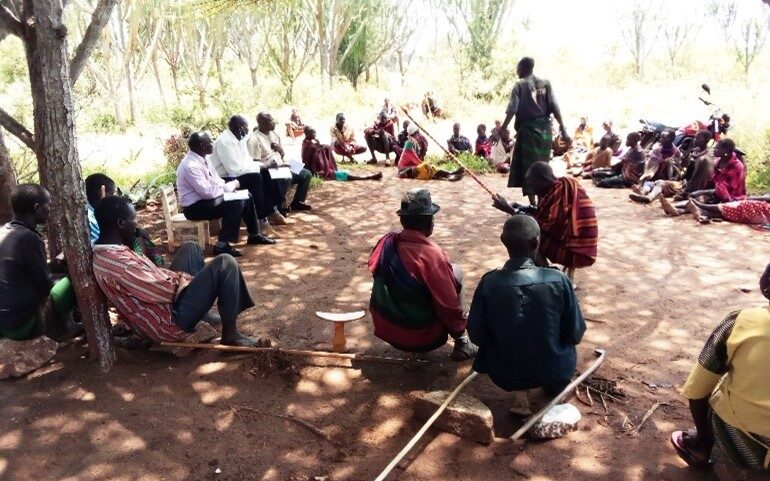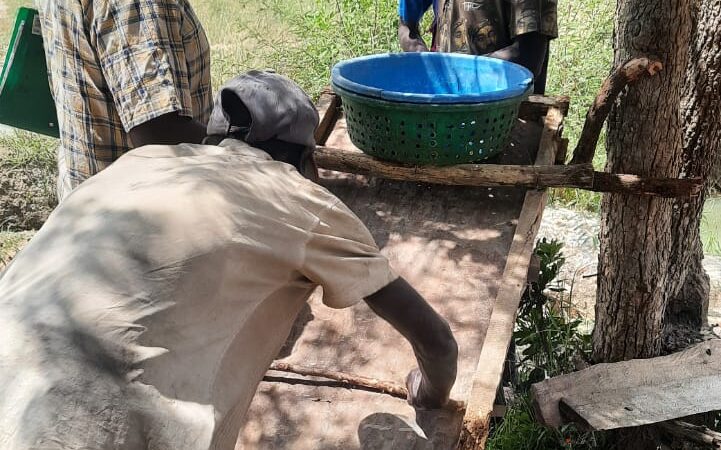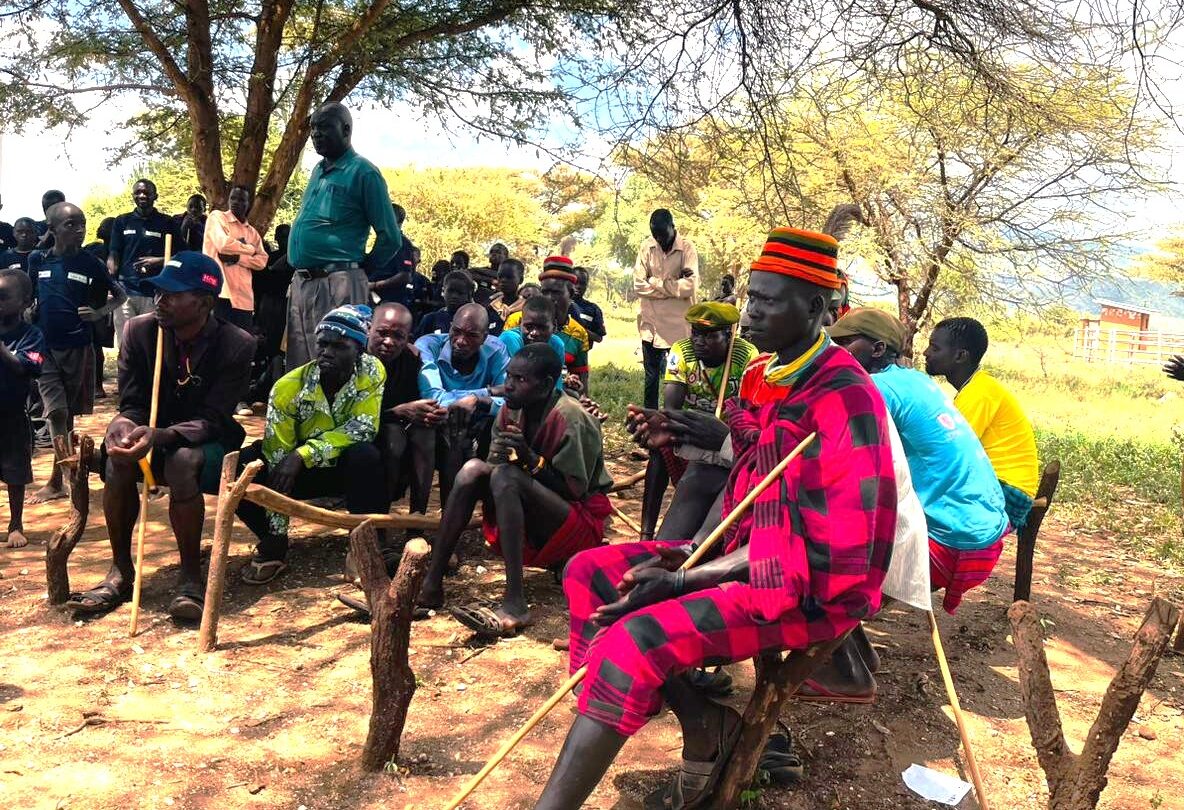Specific challenges in working in Karamoja
“Some may say that child labour is an inevitable consequence of poverty and that we have to accept that. But that is wrong. From my own experience, I know it is not always easy to address the urgent needs. But we have to protect children’s rights, no matter what. That also includes children’s right to fulltime, formal quality education and future decent work.” Juliet Wajega, WNCB programme manager Uganda
Karamoja region has gone through many shocks and the difficulties for households to manage these shocks – insecurity, hunger, and economic /financial stress – have pushed many children to work and have led to child abuse, child marriages and trafficking. The 2-year lockdown and school closures, as a result of COVID-19, increased the number of children joining the workforce and school dropout.
Due to food shortages in the Nakapiripirit and Moroto districts of Karamoja children and women are greatly affected. Children between 5 and 17 years migrate from the villages in search of employment, most ending up on streets of the neighbouring towns, even Kampala and to Nairobi and other towns in Kenya, working in agriculture (especially cattle herding) and in gold mines.



Draughts and crop failures
The Karamoja region is the driest region of Uganda, with Moroto and Nakapiripirit as the driest districts. This region is particularly affected by climate change and drought, and limited surface water, a hot, arid climate, and a short season of torrential rains have brought soil erosion and land degradation leading to crop failures and food insecurity.
Cattle raids and insecurity
The Karamoja region enjoyed a decade of peace after the Government of Uganda disarmed robbers in the early 2000s. But little was done to rehabilitate the young men who gave up their guns, they didn’t disarm the mind.
COVID-19, which disrupted the cattle trade and left young men without work and income, made rival groups within Karamoja turning against each other again. The level of violence remains lower than it was in previous waves of raiding. Nonetheless, parents became cautious of sending their children to school for fear of falling victims of cattle-raiders. The insecurity also affected the VSLA activities, as members could not often meet to conduct their savings activities which led to a significant drop of their savings. The drop in savings was also accelerated by the drop in economic activities due to the insecurity in the area.
Education
Karamoja’s education sector faces many challenges: lack of teachers, weak school management, inadequate learning materials and poor school infrastructure, and low value for education—especially for girls—by some communities. In some remote areas there are no education facilities at all. Out of 40 parishes in Karamoja, only 10 have a primary school.
All these factors contribute to low enrolment and poor quality education. Poverty and the insecurity in the region, as well as social and cultural factors – including the Karamojong’s traditional nomadic lifestyle – lead to low educational achievements and school attendance. Limited chances for formal education leave children with no alternative sources of livelihood other than working. The out-of-school children are more vulnerable to child labour than their in-school counterparts. Whereas girls think of getting married the moment they drop out of school, boys think of going to work.
Gender
The patriarchal system, which is fuelled by traditional norms, beliefs and customs, places the status of men over women. As such, women’s access to productive resources is moderated by their relationship with a male, usually either a father or husband. Women and girls are responsible for producing food for the entire family. In education, men and boys receive preferential treatment over women and girls. Children’s engagement in labour is gender based. In Karamoja, the need for boys to raise the required number of cows for bride price by the time they are ready for marriage forces them to engage in hard labour. Similarly, girls’ involvement in hard labour is driven by their need to contribute to the food expenses of the family.
COVID-19
After the Government of Uganda opened its economy in January 2022, the effects of the COVID-19 lockdown continued to be felt. Children did not return to school and are exposed to child labour. Especially girls have gone back to the mines to look for a means of livelihood.
During the COVID-19 lock down, school closures escalated incidences of pregnancies among girls especially among the 10-14 year old where the increase was by 366.5% from 290 in March 2020 to 1,353 in September 2020 (FAWEU report 2020).
As a result of COVID-19, economic activities continued to be slow, for example households engaging in mining lacked a market for their aggregates which largely affected their access to income. This also augmented the poverty levels, affected savings and affected the households’ ability to meet their day to day needs.

